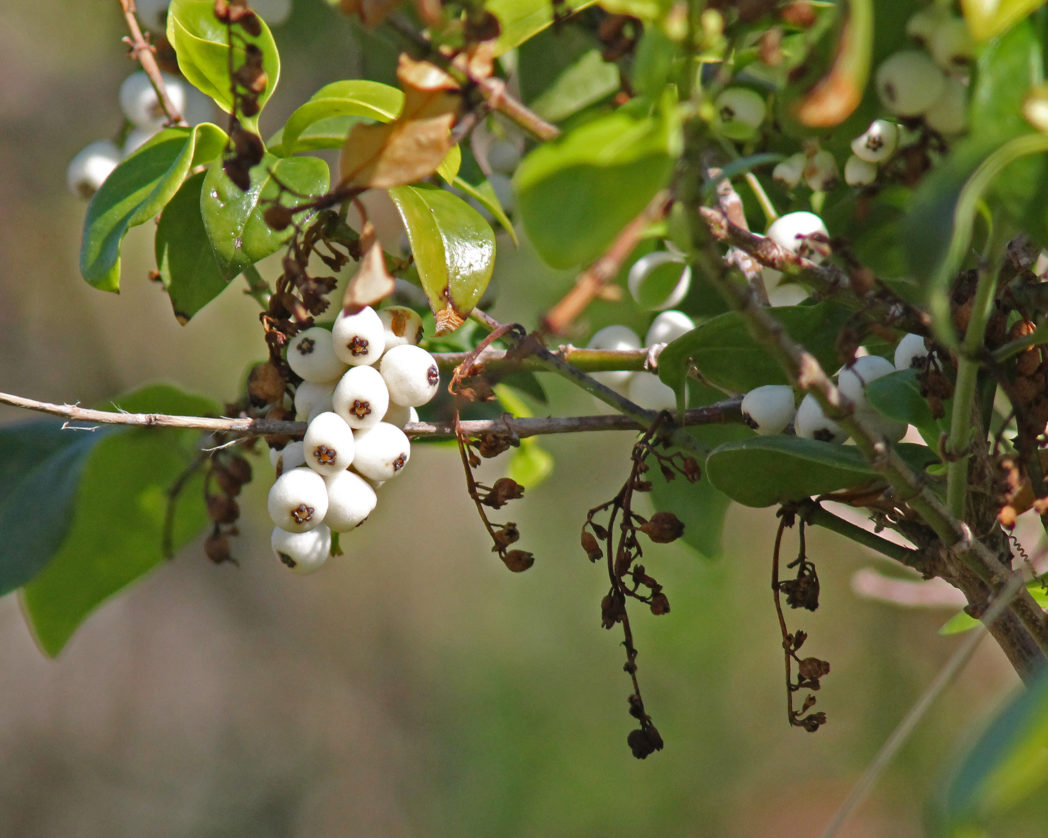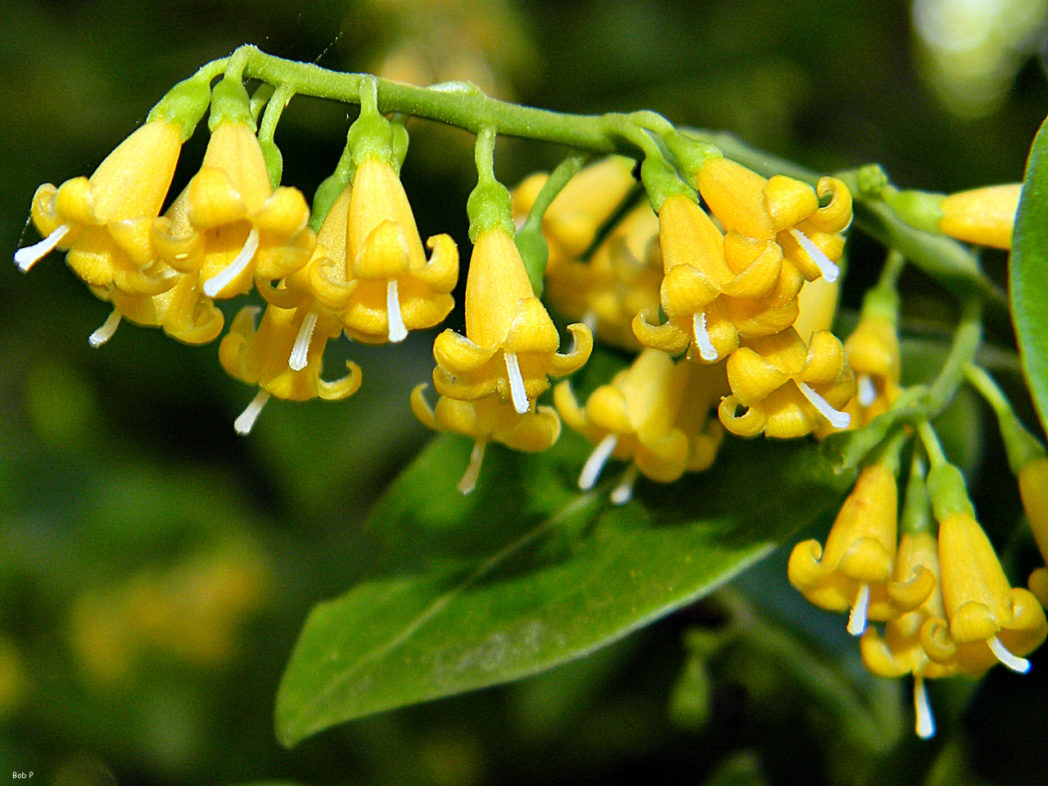Snowberry
Pictured above: Snowberry (Chiococca alba) by Bob Peterson (CC BY 2.0). Click on terms for botanical definitions. View post as a PDF.
Snowberry (Chiococca alba) is a robust evergreen vinelike shrub that occurs naturally in pine rocklands, shell mounds and coastal strands and hammocks. Its fragrant flowers typically bloom spring through fall, but may bloom year-round. This plant is a larval host for the Miami blue butterfly (Cyclargus thomasi) and Snowberry clearwing moth (Hemaris diffinis). Its flowers provide nectar for a variety of insects, and its berries are consumed by birds and other wildlife.
Snowberry’s yellow to creamy white flowers are small (up to ½”), five-lobed and bell-shaped. They are born in panicles. Leaves are dark green with entire margins and are oppositely arranged. They may be elliptic, ovate or broadly lanceolate. Stems are angled and woody. Branches are slim and vinelike. Fruits are white, round or oblong drupes.
The genus name Chiococca comes from the Greek chion, meaning “snow,” and kokkos, meaning “kernel” or “berry.” The species epithet alba is Latin for “white” and refers to the color of its berries.

Family: Rubiaceae (Coffee or madder family)
Native range: Most coastal peninsular counties
To see where natural populations of Snowberry have been vouchered, visit florida.plantatlas.usf.edu.
Hardiness: 9A–11
Lifespan: Perennial
Soil: Moderately moist to very dry, well-drained sandy or calcareous soils
Exposure: Partial shade
Growth habit: 6–10’ tall and equally wide
Propagation: Seed, cuttings
Garden tips: Snowberry’s habit varies between shrub and vine. It can be aggressive in the garden so is better suited for naturalistic or restoration landscapes; however, it also works well as a buffer plant. It is both salt- and drought-tolerant.
Snowberry plants are occasionally available from nurseries that specialize in Florida native plants. Visit www.plantrealflorida.org to find a nursery in your area.

